Testing for accessibility? Our top 5 user recruitment tips
27th July 2016

Throughout 2016, PFR is developing its digital accessibility campaign #MakeTheWebAccessible to encourage more organisations to test their products and services with the help of people with accessibility issues. This time we decided to get valuable tips from the real recruitment experts: our team.
Over the last few months, the People for Research team saw an increase in the number of requests we get asking us to recruit people with accessibility issues. Actually, some of the projects we are currently working on are exclusively open to participants who use assistive technology to access the digital universe.
“More companies are starting to recruit people with accessibility issues. They weren’t initially, but it’s a growing need at the moment, something they are accommodating for and that they now understand”, says one of our Project Managers at People for Research. “The vital role of disabled people in usability testing has definitely been growing in the past year, also because UX and usability are growing.”
“The clients specifically ask the users to bring their own devices in and test the website using different types of assistive technology to make sure no one is left behind.”
On the other side, people with disabilities are also aware of this change and seem really pleased that more companies are recruiting to test accessibility. The number of people who use assistive technology and offer their time to work with People for Research is also growing. “It’s really great that they think about us when they decide to sign up and offer their time”, our team member says, “it’s a shame we can’t recruit them all the time to test different products and services, but the Market Research Society’s Code of Conduct prevents us to do so.”
Also, they add: “the feedback provided by people with disabilities is really good and informative. They really go the extra mile because they know first-hand how important digital accessibility is”.
So, is your company or agency looking to test a product or service with the help of people with accessibility issues? Here are five top tips.
🎈 Give the recruiters more lead time
Whether you are recruiting in-house or working with a recruitment partner like People for Research, be aware that you’ll need a longer lead time than usual to recruit people with disabilities. This means more time to recruit, as well as more time to replace the drop outs.
We would advise you to give your recruitment team or partner at least three weeks lead time to recruit people with disabilities, especially if you want fresh participants that have never taken part in paid research.
🎈 Expect a higher drop-out rate
Clients should expect a higher than usual drop-out rate when recruiting people with disabilities for several reasons: they might feel unwell on the day of research, their carer might be busy or they might have a last minute doctor’s appointment. That is why having a couple of all-day standbys is a good idea, when possible.
🎈 Make sure your budget can accommodate the costs
If you are working with a recruitment partner, and depending on how complicated your brief is, remember there could be a lot of “free find” (find out what free find means here) work involved in recruiting people with accessibility issues.
At People for Research, for instance, we regularly go outside of our database to find the right people. We contact charities, organisations and groups of people; and then these groups need time to distribute the information. Next, we need time for those people with disabilities to contact us back. We actually only start screening potential participants after this whole process. All of this to say, recruiting the right participants who use a specific type of assistive technology could be time-consuming, which makes the recruitment a bit more expensive.
Finally, remember that people with disabilities, and their carers when necessary, need to be properly rewarded for their time.
🎈 Be understanding
Sometimes it is impossible for people with disabilities to carry their assistive devices around, so bringing the technology with them on the day of testing might not be feasible. Luckily, most clients can usually work out alternative solutions with the recruitment partner’s help.
🎈 Do your homework
Remember that recruiting people with accessibility issues could mean having to spend more time than usual doing research before the testing takes place. It’s important for the researchers to be informed about accessibility software and the different types of assistive devices, so make sure beforehand that your prototype works with the software and hardware you will be using during testing.
![]() Maria Santos, Head of Digital Ops & Data Protection
Maria Santos, Head of Digital Ops & Data Protection
If you would like to find out more about our in-house participant recruitment service for user testing or market research get in touch on 0117 921 0008 or info@peopleforresearch.co.uk.
At People for Research, we recruit participants for UX and usability testing and market research. We work with award winning UX agencies across the UK and partner up with a number of end clients who are leading the way with in-house user experience and insight.


